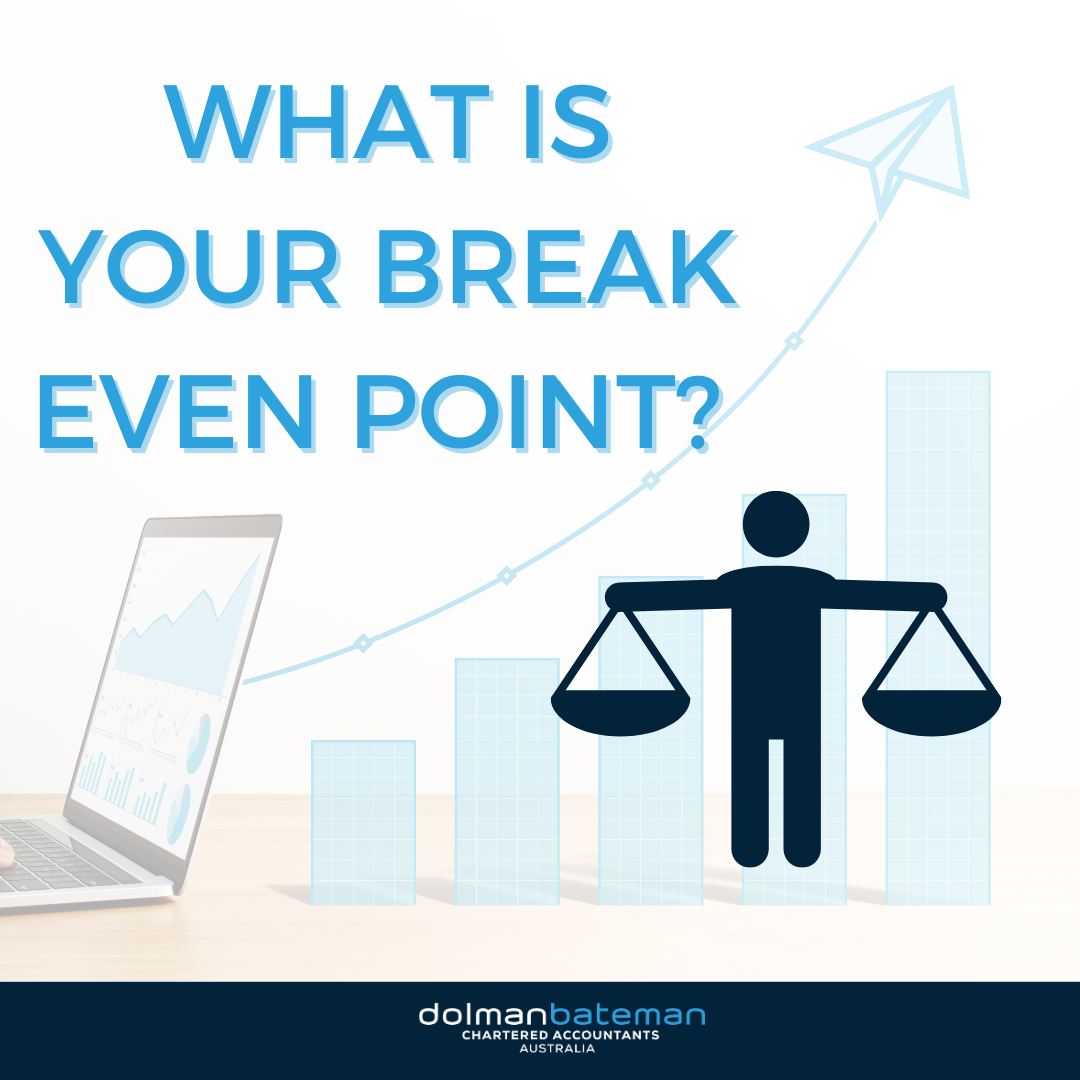Below is a summary of the different methods for claiming motor vehicle expenses in your individual...
What is my break-even point when running my business?

If you're an aspiring entrepreneur or a business owner, understanding your break-even point is crucial for financial success.
What is the Break-Even Point?
The break-even point is a fundamental concept in business that represents the precise moment when your total revenue equals your total expenses. At this point, you are neither making a profit nor incurring a loss. It marks the threshold where your business begins to generate positive income.
Why is the Break-Even Point Important?
Determining the break-even point is a vital exercise for any business owner, as it offers valuable insights into your company's financial health and stability.
Here are some reasons why it's crucial to know your break-even point:
Profitability Assessment: By understanding your break-even point, you can set realistic revenue goals and gauge the amount of sales or services you need to cover your expenses and achieve profitability.
Risk Management: Knowledge of your break-even point helps you make informed decisions regarding pricing strategies, cost control, and business expansion, reducing the risk of financial instability.
Strategic Planning: Armed with this information, you can develop effective business strategies to optimize profits, improve operational efficiency, and outperform your competitors.
Calculating the Break-Even Point:
To calculate your break-even point, you'll need to consider two primary factors: fixed costs and variable costs.
Fixed Costs: These are expenses that remain constant regardless of your level of production or sales. Examples include rent, insurance, utilities, and salaries.
Variable Costs: These expenses fluctuate with your production or sales volume. Examples include raw materials, direct labor costs, and sales commissions.
The break-even point formula is relatively straightforward:
Break-Even Point (BEP) = Fixed Costs / (Unit Selling Price - Variable Cost per Unit)
For instance, if your fixed costs amount to $20,000 per month, your product sells for $50 each, and the variable cost per unit is $20, the break-even point would be:
BEP = $20,000 / ($50 - $20) = 667 units
This means you need to sell 667 units of your product to cover all your costs and reach the break-even point.
Using the Break-Even Point for Business Growth:
Once you've determined your break-even point, you can devise strategies to push beyond this threshold and drive your business to greater heights.
Sales and Marketing: Focus on increasing sales through targeted marketing campaigns, expanding your customer base, or launching new products and services.
Cost Optimization: Identify areas where you can reduce fixed and variable costs without compromising the quality of your products or services.
Pricing Strategy: Reevaluate your pricing strategy to find a balance between affordability for customers and maintaining healthy profit margins.
Diversification: Consider diversifying your offerings to tap into new markets or create multiple revenue streams.
If you would like us to help you calculate your break-even point or to complete a business health check, please contact us today. This blog has been prepared for the purposes of general information and guidance only. It should not be used for specific advice or used for formulating decisions under any circumstances. If you would like specific advice about your own personal circumstances, please feel free to contact us on 02 9411 5422. We can help make sure the right method is used to give you the maximum possible tax deduction associated with any of these methods.
This blog has been prepared for the purposes of general information and guidance only. It should not be used for specific advice or used for formulating decisions under any circumstances. If you would like specific advice about your own personal circumstances, please feel free to contact us on 02 9411 5422. We can help make sure the right method is used to give you the maximum possible tax deduction associated with any of these methods.


